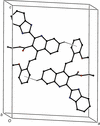issue contents
November 2022 issue

Cover illustration: 4-[trans-4-(trans-4-Propylcyclohexyl)cyclohexyl]benzonitrile has two different solid phases and exhibits thermotropic liquid-crystalline behaviour, with a remarkable interval of stability of the mesophase between the lower melting solid phase (75 °C) and the isotropization temperature (247 °C). See Gupta, Das, Crispini, Scarpelli, Borbone & Centore [Acta Cryst. (2022), C78, 647–652].
Halogen, chalcogen, pnictogen and tetrel bonds


 access
access



research papers








 access
access



 access
access

 access
access




 journal menu
journal menu





























